Research Activities
Since research in the field of environmental radioactivity require multidisciplinary expertise, we are conducting 6 project research projects that cross and integrate 15 fields in 5 divisions as a research organization. The following is an introduction to the research content of each project.
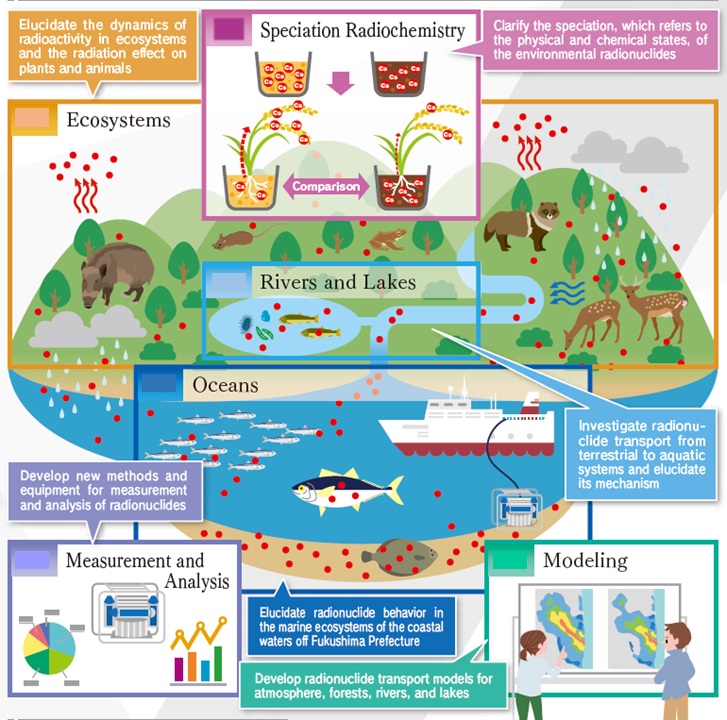
Rivers & LakesUnderstanding Radioactive Substances Migrating from Land to Water and Elucidating Migration Mechanisms
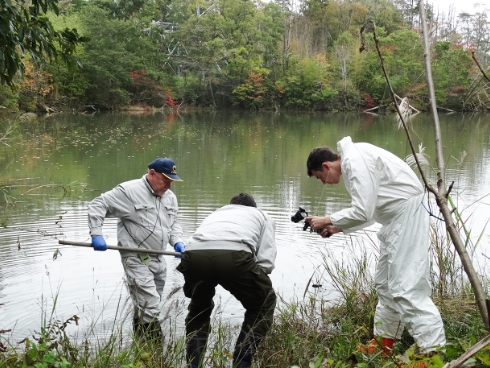
After radioactive substances discharged from the Fukushima Daiichi Nuclear Power Plant accident and deposited on the land, they entered into dynamic processes that continually move the radionuclides by physical (e.g., wind, rain) and biological methods (e.g., uptake by plants). To reduce the risk of radiation, it is necessary to understand the movement processes and be able to predict where the radiation will be in the future.
For example, cesium-137 attaches to soil particles and is transported with the soil by erosion when it rains, flowing into the sea through rivers. In addition, the soil-bound cesium accumulates as sediments in closed water basins like lakes and marshes. The detachment of cesium away from soils is a slow process that is governed by chemical changes. This knowledge was formed from research on radioactive substances in the past.
However, because Fukushima has more rainfall and its geographical features are much steeper, the conditions that govern the movement of radioactive substances are different from those that have been previously studied. On the basis of these differences, and making good use of past knowledge, our research seeks to clarify the original condition of radioactive substances on the land in Fukushima Prefecture so that we can predict where it will reside in the future.
Main research being conducted
- Long-term dynamics of radionuclides in rivers, ponds, lakes, and dam reservoirs.
- Seasonal variation of radionuclide activity concentrations in water bodies and underlying mechanisms.
- Redistribution of radionuclides on river basins.
- Process-level modeling of radionuclide behavior in soil-water environment.
- Comparison of behavior of different origin radionuclides in the environment.
OceanBehavior of radionuclides in the coastal ecosystem off the coast of Fukushima
Artificial radionuclides spreaded into the air falls on the surface of the earth and the sea after it is carried by mainly rain water (Wet deposition). Because of gravity or the interaction with particles in the air, some radionuclides fall on the surface of the earth and the sea (Dry deposition). Also, it is spreaed into the sea directly.
Radionuclides that fall on the ocean or are released directly into the ocean are carried by ocean currents, spreading and being distributed into the inner parts of the ocean as precipitated particulate matter.
The ocean is a huge sink for radionuclides. It is important to know how radionuclides move within the ocean for the better understanding their impact on the marine environment and on human society through food webs.
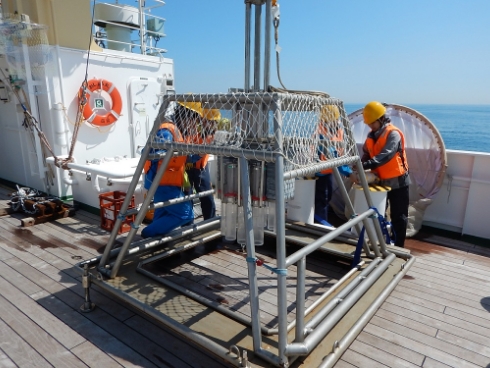
Main research being conducted
- Field observation in estuarine and coastal waters, and the ocean/Modeking & simulation/Laboratory experiments with a method ofsolution chemistry
- Transfer parameters of radionuclides from sea-water to sediments or organisms
- Prediction of long-term dynamics of artificial radionuclides in the ocean using natural radionuclides and stable nuclides
EcosystemsUnderstanding radioactive materials migrating through ecosystems and elucidating mechanisms of bio-transfer
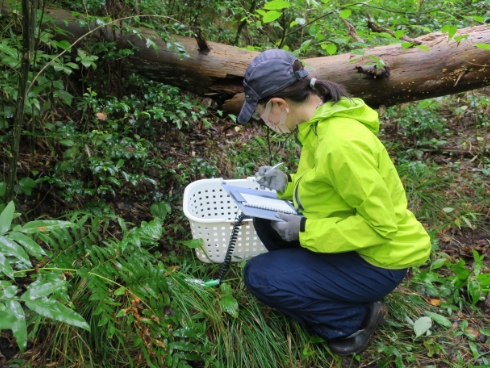
IER’s ecosystem group focuses on radioecological field studies within the human exclusion zones of Fukushima and Chernobyl.
“Radioecology” is a scientific discipline that studies the movement of radionuclides in the environment, and the effects of the environmental radiation on plants, animals and humans.
We are taking a systems approach to our research by linking molecular, individual, population and community level impacts from radiation exposures. We recognize that many confounding variables in field research can cause bias when interpreting research data. For example, the evacuation and resettlement of humans is likely having a profound effect on populations of wildlife. Thus, the dynamics of human residency in the contaminated zones will need to be a co-factor to consider when determining the effects of radiation on populations of wildlife, such as wild boar.
Our group is also specializing in methods to measure radiation dose to free-ranging wildlife. Improved dosimetry is not only important for critical evaluation of long term radiological effects on wildlife populations, but also for assessing potential health effects to humans as they repopulate evacuation zones.
Main research being conducted
- Concentration of radiocesium in dissolved form (dissolved components in water) and suspended form (turbid components)
- Trends in radiocesium concentrations in fish and mechanisms of uptake
- Dynamics of radiocesium in forest ecosystems, exposure doses to wild animals and plants, and evaluation of radiation effects
- Effects of radiocesium contamination on the microbial composition of forest soil
Measurement & AnalysisDevelopment of new measurement methods and analytical instrumentation
In the measuring and analysis group, we develop instruments that are adapted to measure and analyze radiation in the harsh environments of forests, rivers, lakes and marshes. We also use existing equipment for analyses, develop analytical methods to quickly evaluate fixed quantities of radionuclides, and study environmental dynamics of radionuclides at the micro-scale level.
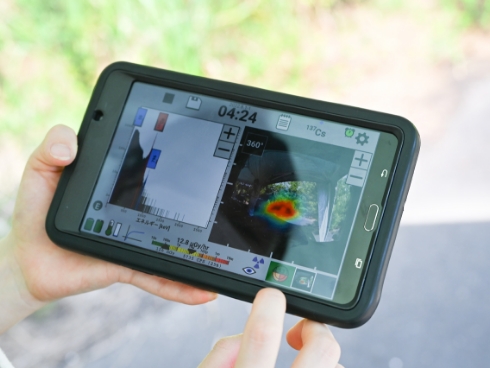
Main research being conducted
- Development of an underwater robot that can collect soil samples from the bottom of lakes and marshes with deep water, such as Inawashiro, without destroying the layered structure of the sediments.
- Development of a handheld mapping system that can quickly and accurately measure the distribution of radionuclides in forests and agricultural lands by combining a “portable γ-ray spectrometer” and GPS.
- Development of an automated multi-step separation and enrichment method for radioactive strontium (90Sr), and highly accurate separation using an ICP mass spectrometer.
- Development of an analytical method for imaging microscopic distribution of radionuclides in minerals and cells while observing them with an electron microscope
Speciation RadiochemistryPhysicochemical forms of radionuclides in environmental samples
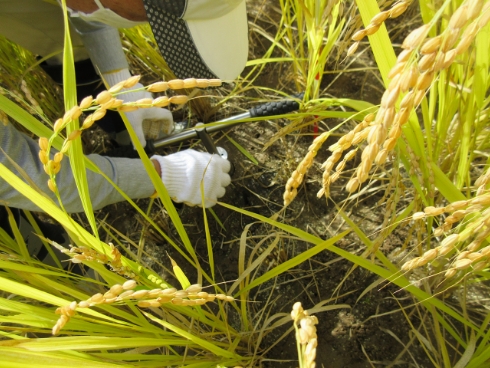
It is very important to accurately measure radionuclides in the environment so that we can better predict their behavior. Knowing their behavior helps predict their potential effects to humans and the environment. However, most radionuclides can occur in several different forms within the environment, and these forms can have widely different behaviors, even if the different forms occur for the same radionuclide.
At the IER, we are taking “existing form” in a broad sense. We study radionuclides based on their bonding states and the environmental substances in which they are associated. Often we use advanced methods to separate the various forms in which a radionuclide resides. Once the various chemical forms of radionuclides are identified and quantified, we can make a better estimate of their environmental transport and fate. This knowledge is critical to improved human and environmental risk analyses.
Main research being conducted
- Research to separate radiocesium from soil using various chemical solutions and to determine the form of radiocesium present.
- Research to determine the amount of radiocesium strongly bound to soil and its adsorption (vulnerability)
- Research on the existence form of the suspended and dissolved components of radiocesium in agricultural water
ModellingDevelopment of a model for radioactive material transfer in the atmosphere, forests, rivers, and lakes
How were radioactive substances spread through the environment after being emitted by the March 2011 Fukushima Daiichi Nuclear Power Plant accident? Where will the radionuclides reside within Fukushima in the future? What will happen to the radionuclides during extreme weather conditions, such as severe rain storms or strong winds? To answer these types of questions we need methods to predict the transport phenomenon of radioactive substances.
Numerical calculation modeling plays an important role in making such predictions. Our modeling group seeks to understand the current situation of radioactive substances in Fukushima and predict their future conditions. The research requires close coordination of IER’s modelling group with IER’s field researchers that survey radionuclide contamination in the real environment. We quickly transfer the new data that they collect in Fukushima to numerical models so that predictions about the future state of radioactive contamination are more accurate and contain less uncertainty.
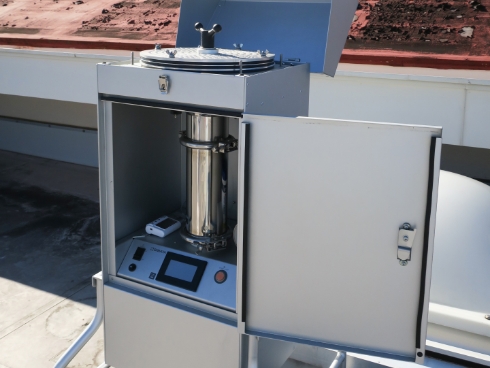
Main research being conducted
- Modeling of radioactive material transport in the atmosphere
- Modeling of radioactive material transport in forests
- Modeling of radioactive material transport in rivers, lakes, and marshes
